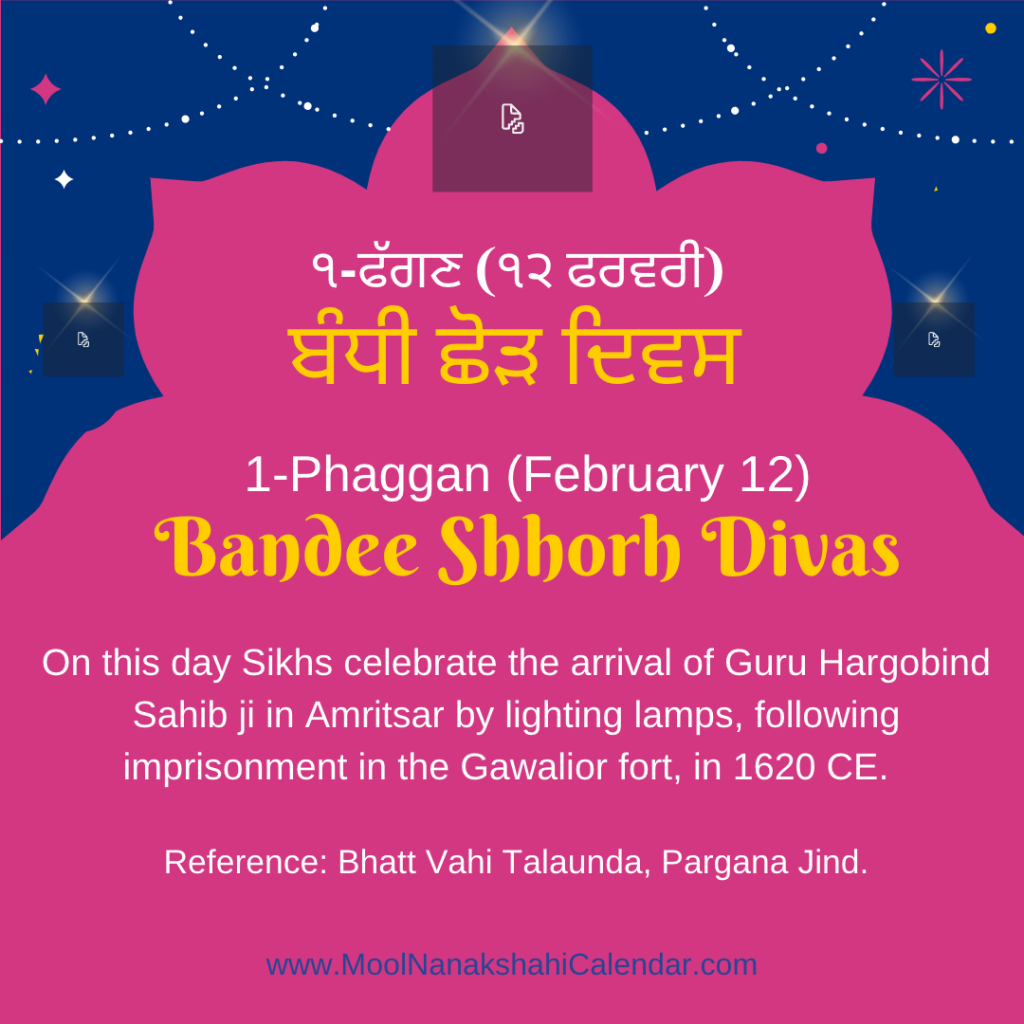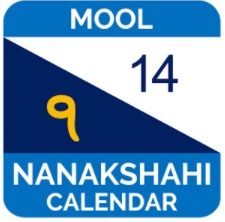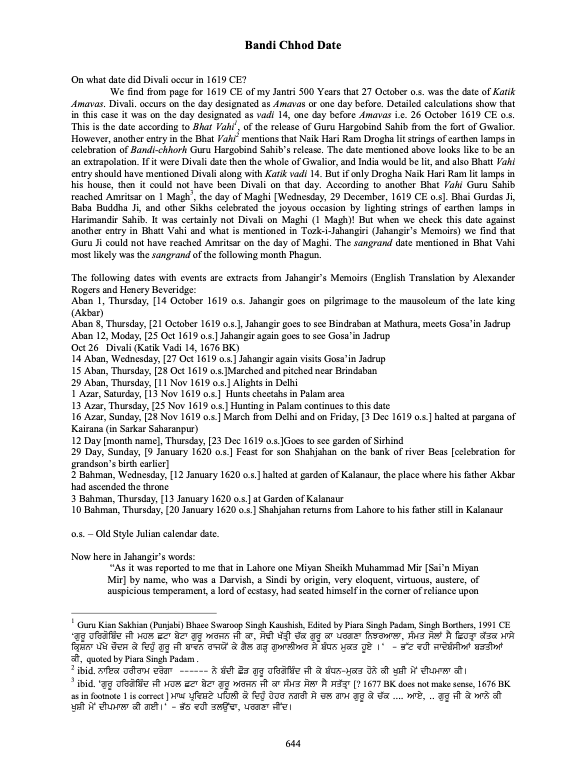ਬੰਧੀ ਛੋੜ ਦਿਵਸ, ੧-ਫੱਗਣ (੧੨ ਫਰਵਰੀ) | Bandee Shhorh Divas, 1-Phaggan (February 12)
On this day Sikhs celebrate the arrival of Guru Hargobind Sahib ji in Amritsar by lighting lamps, following imprisonment in the Gawalior fort, in 1620 CE. Reference: Bhatt Vahi Talaunda, Pargana Jind.
Read more about the historical reference

Sikhs celebrated the return of their sixth Guru, Guru Hargobind with the lighting of hundreds of lamps at Darbaar Sahib (The Golden Temple).
“According to Bhatt Vahis Guru Hargobind Sahib accompanied Jahangir from Agra to Kalanaur. But Jahangir’s memoirs make no mention of Guru Sahib. At Kalanaur Guru Sahib too, most likely, would have met Sai’n Mian Mir Ji . Some time during the period of Jahangir’s stay in Kalanaur from 12 January 1620 o.s. to the end of January Guru Sahib separated from Jahangir’s entourage.
Most probable date is near about 21 January, and then Guru Sahib went to Heran village and finally to Amritsar. Bhatt Vahi mentions Sangrand of Magh as the date of arrival at Harmandir Sahib It could not be Sangrad of Magh as this occurred on Wednesday, 29 December 1619 o.s. Guru Ji and Jahangir arrived at Kalanaur about two weeks after that date. The most likely date of Guru Sahib’s arrival at Harmandir Sahib would be, then, the next Sangrand of the month of Phagun, on Thursday, 27 January, 1620 o.s. This is the date on which Baba Buddha Ji, Bhai Gurdas Ji and other Sikhs lit strings of earthen lamps, deepmala, to celebrate Guru Sahib’s homecoming .”-Pal Singh Purewal
In Nanakshahi calendar this event, Guru Sahib’s homecoming, should be fixed on 1 Phagun / 12 February; and, also, in the absence of any conclusive proof for date of Bandi Chhorh day this date could be celebrated as such. The historical date would be 1 Phagun / 27 January 1620 o.s., and for observing in Nanakshahi calendar it would be 1 Phagun / 12 February each year”. – Pal Singh Purewal.
“If it were Divali date then the whole of Gwalior, and India would be lit, and also Bhatt Vahi entry should have mentioned Divali along with Katik vadi 14.”
References:
- Bhatt Vahi Talaunda, Pargana Jind.
- Purewal, P. S. (Aug-2022). Nanakshahi Calendar with Calendar Conversion Tables for 632 Years. (1st ed.). Page 644-645. ISBN 81-7205-673-7.
Definitions/meanings:
- Bhatts (kirtaniyas of Guru period)
- Bhatt Vahi: Bhatt Vahi mean records of Bhatts
- Talaunda: name of the record
- Pargana: group of towns
- Jind: location
Alternative common spellings:
Bandi Chorrh, Bandhi Chorh Diwas, Bandi Chhorh, Bandi Chorr

